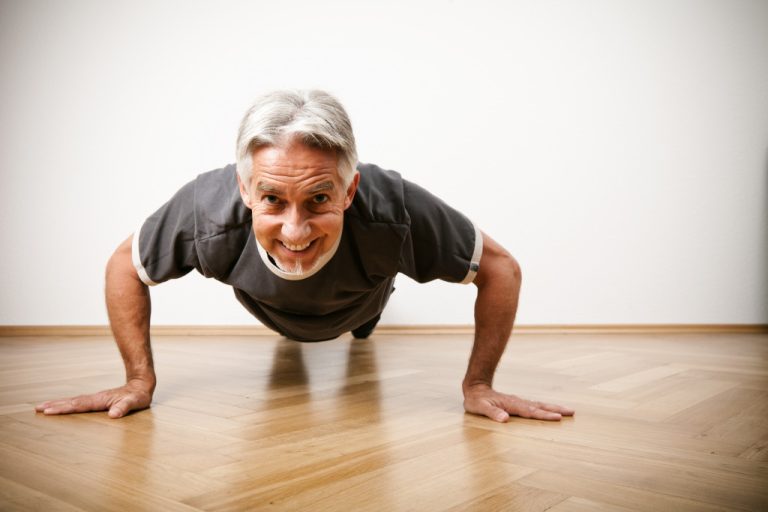- Exercise can help to improve strength and flexibility, reduce stress and anxiety levels, and promote better sleep quality.
- Acupuncture is a traditional Chinese medicine that helps alleviate pain by promoting energy flow in the body.
- Eating a balanced, nutritious diet with superfoods and following an individual meal plan can reduce inflammation and pain.
- Meditation can reduce pain intensity, improve mood, and reduce stress levels.
- Consulting with a healthcare professional is essential to determine the best approach for managing pain.
As people age, their bodies change significantly, and they might start experiencing pain and discomfort more frequently. While some people might go for medications and surgeries to counter the pain, others prefer a more holistic approach.
Holistic approaches look at people in their entirety, including their mind, body, spirit, and emotions, and work on improving overall well-being, which helps to alleviate pain or discomfort. This blog post explores some of the best holistic approaches to pain management in aging individuals.

Exercise
It might seem counterintuitive, but exercise can help alleviate pain in aging people. Exercise is beneficial in multiple ways. It helps to improve strength and flexibility, essential for good posture and keeping the joints and muscles functioning correctly.
Endorphins
Exercise also releases endorphins, which are natural painkillers, and it helps to reduce stress and anxiety levels. Aging individuals should seek the recommendation of their doctors to identify the type of safe exercises they can perform.
Overall Health
Activities such as swimming, walking, yoga, and stretching can all help to reduce pain and improve overall health. Regular exercise can also lead to better sleep quality, essential for managing pain. As with any new physical activity program, aging individuals must start slowly and gradually increase their intensity over time. When done safely and correctly, exercise can effectively reduce pain and improve overall health.
Acupuncture
Acupuncture is a traditional Chinese medicine that involves the insertion of fine needles into certain points on the skin. These points are believed to align with the body’s energy channels. Acupuncture can help alleviate pain by promoting energy flow in the body, which helps reduce inflammation and pain. It is a non-invasive procedure that can complement other forms of therapy.
Chronic Pain
Studies have found that acupuncture can help alleviate pain and improve overall functioning in various medical conditions. It can be used to treat chronic pain such as neck, shoulder, back, and knee pain.
Rare Diseases
But additional research is necessary to show its effectiveness on rare diseases, such as fibromyalgia. Researchers should focus on rare diseases and illnesses to prove the efficacy of acupuncture for managing certain conditions. To facilitate information gathering, researchers should work with a center offering patient recruitment for rare disease research. The center should have a reliable recruitment method to find patients experiencing these diseases.
Nutrition
What you eat can significantly impact how you feel in your body. A balanced, nutritious diet can help to alleviate inflammation, which can cause pain. Foods such as leafy greens, nuts, berries, whole grains, and fatty fish have anti-inflammatory properties and can support a healthy immune system.
Superfoods
Drinking enough water to keep your cells well-hydrated is also essential. Eating a variety of whole foods and incorporating nutrient-dense superfoods into your diet can help you to feel energized and more resilient.
Meal Plan
Additionally, following a meal plan tailored to your individual needs can make incorporating nutritious options into your meals easier. Making small changes like cutting out processed foods, increasing fiber intake, or adding in healthy fats can all help to improve your health and reduce pain.

Meditation
Meditation is another holistic approach to pain management that has gained popularity in recent years. It is a form of mental exercise that involves focusing your mind on a particular thought, object, or activity. It helps you be present in the moment, promoting relaxation, reducing anxiety levels, and improving sleep quality.
Low-Risk Therapy
Meditation is a low-risk therapy that can complement other forms of treatment. It can also help you to develop self-awareness and get in touch with your emotions. Research has shown that meditation can reduce pain intensity, improve mood, and reduce stress levels.
How to Meditate
To get started with meditation, find a comfortable spot and focus on breathing while letting go of any thoughts or worries. You can also try guided meditations or mindfulness meditation apps to help deepen your practice. Many resources are available to help you establish a regular meditation routine, and you may find that it can effectively relieve pain.
Aging individuals do not have to suffer from chronic pain and discomfort. They can explore several holistic approaches to alleviate their pain and promote overall well-being. The best methods include exercise, acupuncture, nutrition, and meditation. These approaches help to address the problem holistically and alleviate the root cause of the pain. It is crucial to consult with a healthcare professional to determine which approach is most suitable for you when managing pain.



